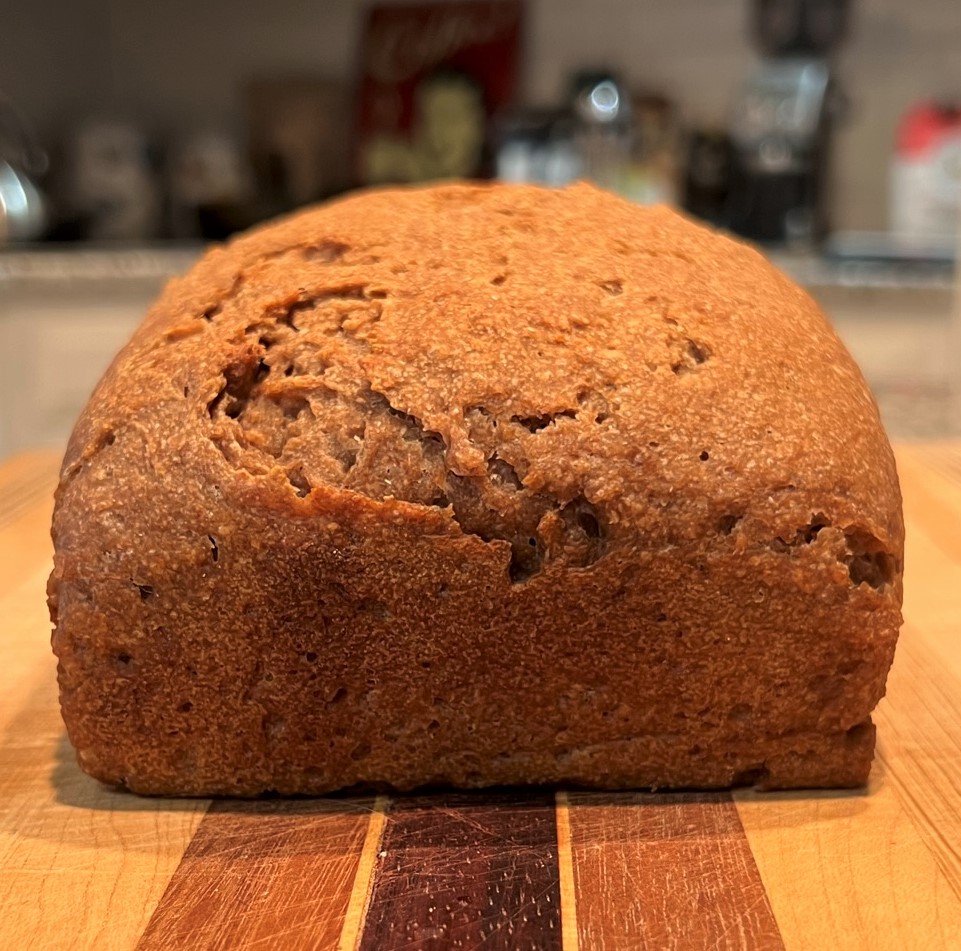A few weeks ago, Abe posted a 100% emmer loaf. Earlier this year I baked a 30% emmer loaf from a posting by leslieruf, and that was followed by one of 60%. When Abe posted his, I was intrigued to give it a go.
Abe's formula involved a water yeast, however, and I have only a typical sourdough starter. That began a few modifications to his approach (and an exchange of private messages with Abe, who was very helpful with his advice and suggestions -- thanks). My first attempt was not bad, but I decided to make a few more changes before posting my result. This is for those of you who want to bake a 100% emmer bread by using a sourdough starter.
Inspired by trailrunner and Isand66, I visited the Barton Springs Mill website and ordered some emmer flour. The flour (along with some rye) arrived nicely packaged, and I will give Barton Springs more business in the future.
For the biga I found that a hydration of around 64% was needed (and aiming for 60% left some flour dry and unmixed). I combined 20 grams of sourdough starter, 450 grams of emmer flour, and 284 grams of water. As Abe commented, the result resembles wet sand. It is easy to mush into a cohesive mass, which I left in a covered bowl overnight at room temperature. To encourage the flavor, I left the biga for about fourteen and a half hours.
The next morning I combined the biga, 150 grams of emmer flour, 11 grams of salt, and 150 grams of water. That was fairly simple, and after about eight minutes of kneading by hand (think of the Forkish pincer method) the dough seemed ready. I took the temperature (72F) of the dough and covered the bowl. After an hour I did a stretch-and-fold. Abe waited a bit and then put his dough into the refrigerator, but I decided to do the bulk fermentation entirely at room temperature. After another three hours the dough had expanded nicely, and I removed the dough from the bowl onto the countertop.
The shaping was essentially merely removing a bit of the gas and then forming the blob of dough into a roughly cylindrical form. In my first attempt I had flattened the dough and then rolled it up, but this dough isn't sticky enough and doesn't bond at the interfaces, so that approach was a mistake. The way I did it this time will be the one for the future bakes. I loaded the dough into a loaf pan and covered it for the final proofing.
The dough had risen well in a couple of hours, and I decided to bake. The loaf pan went into the 410F oven and stayed there for 40 minutes. Abe had taken his loaf out of his pan to let the crust bake a bit more, but I opted to leave the loaf in until the end. That doesn't seem to have hurt anything, so either way is probably okay.
Here is a view of the crust.

Here is the crumb.

My goal was a fairly tight crumb (similar to what Abe described), and perhaps a more open crumb is possible, but I am happy with this one. The bread has a distinctive flavor, was nice the first day just sliced with nothing added, and was excellent the second day toasted with some butter. Certainly not what you get with standard all-purpose flour. This bread has the feel of an old world flour (which I suppose it should). The loaf weighed 988 grams.
If you are after a 100% emmer bread, I recommend this one. You have the option of water yeast (see Abe's post) or sourdough starter.
Happy baking.